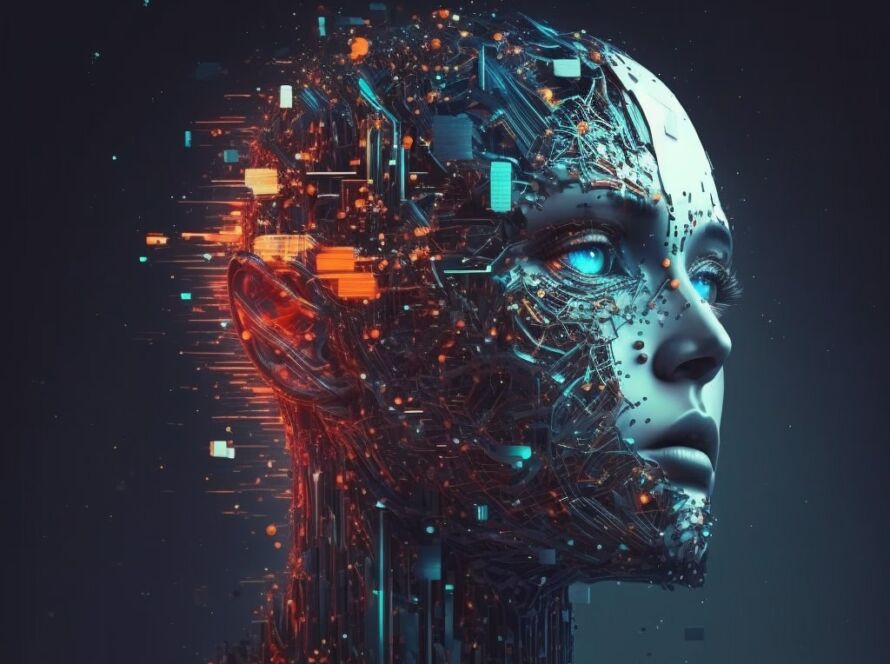Ever wondered how your phone understands your voice, or how websites seem to know exactly what you want to buy? The answer often lies in something called Artificial Intelligence, or AI. It might sound complicated, but at its heart, AI is about making computers smart enough to do things that usually need human brains. Let’s break it down in a way that’s easy to grasp.
What Exactly is This “Artificial Intelligence” Thing?
Think of your own intelligence – your ability to learn, solve problems, and understand things. Artificial intelligence aims to give computers similar abilities. Instead of just following simple instructions, AI allows computers to:
- Learn from information: Just like you learn from books or experiences, AI systems can learn from huge amounts of data. They can spot patterns and improve over time without being told exactly what to do for every situation.
- Figure things out: AI can analyze information and come up with solutions to problems, whether it’s finding the fastest route on a map or suggesting the best way to organize a warehouse.
- Make decisions: Based on what they’ve learned, AI systems can make choices, like deciding if an email is likely to be spam or recommending a product you might like.
- Understand language: This lets computers process and respond to what we say or write, like when you ask a smart speaker a question.
- Recognize things: AI can be trained to identify images, sounds, and other types of data, which is how your phone can recognize your face or how self-driving cars can “see” the road.
How Do Computers Learn to “Think”?
Instead of having thoughts and feelings like us, AI uses something called algorithms. Think of an algorithm like a recipe – a set of step-by-step instructions that tells the computer how to process information. These algorithms can be incredibly complex, allowing the AI to analyze data and find connections that a human might miss.
A big part of modern AI is Machine Learning (ML). Imagine teaching a puppy to sit. You show it what to do, give it a treat when it gets it right, and gently correct it when it doesn’t. Machine learning works similarly. We feed AI systems tons of information, and they learn from that information by finding patterns and making predictions. They get “better” at the task as they see more examples.
There are a few main ways machines learn:
- Learning with a Teacher (Supervised Learning): This is like having someone give the AI the answers. For example, you might show it thousands of pictures of apples and tell it “this is an apple.” Eventually, the AI learns to recognize an apple on its own.
- Learning by Exploring (Unsupervised Learning): Imagine sorting a big pile of different kinds of fruit without anyone telling you their names. You’d start grouping them based on what looks similar. Unsupervised learning is like that – the AI finds patterns and groups data without being told what those patterns are.
- Learning by Trying (Reinforcement Learning): Think of playing a video game. You try different moves, and the game tells you if you’re getting closer to your goal (you get a reward) or further away (maybe you lose a life). AI can learn this way too, by trying actions and learning from the feedback it receives. This is often used for things like training robots to move or developing game-playing AI.
AI is Already All Around Us!
You might not even realize how much you interact with AI every day:
- Your Smartphone: Voice assistants like Siri or Google Assistant, facial recognition to unlock your phone, and even the suggestions your keyboard gives you all use AI.
- Streaming Services: When Netflix or Spotify recommends a movie or song you might like, that’s AI at work, analyzing your viewing or listening habits.
- Social Media: AI helps filter your news feed, suggest friends, and even identify harmful content.
- Shopping Online: The “you might also like” suggestions on websites and the systems that detect fraudulent transactions are powered by AI.
- Navigation Apps: When Google Maps or Waze gives you the fastest route and real-time traffic updates, that’s AI analyzing huge amounts of data.
- Healthcare: AI is being used to help doctors analyze medical images, predict diseases, and even develop new treatments.
- Farming in Te Puke and Beyond: AI can help farmers monitor crop health, optimize irrigation, and even use robots for tasks like harvesting.
Looking Ahead: What Does the Future Hold?
AI has the potential to make huge improvements in many areas of our lives, from making everyday tasks easier to solving some of the world’s biggest challenges. Think about self-driving cars making our roads safer or AI helping us find cures for diseases faster.
However, it’s also important to think about the ethical side of AI. We need to consider things like how AI might affect jobs, how to make sure AI systems are fair and don’t have biases, and how to protect our privacy as AI becomes more integrated into our lives. These are important conversations we need to have as AI continues to develop.
The world of AI can seem like a mystery, but it’s really about making computers smarter so they can help us in various ways. As technology continues to advance, understanding the basics of AI will become increasingly important for everyone. It’s an exciting journey, and we’re just at the beginning of discovering its full potential.
#artificialintelligence, #ai, #machinelearning, #technology, #innovation, #futureoftech, #tepukedigital, #tepuke, #smarttechnology, #easyreading




